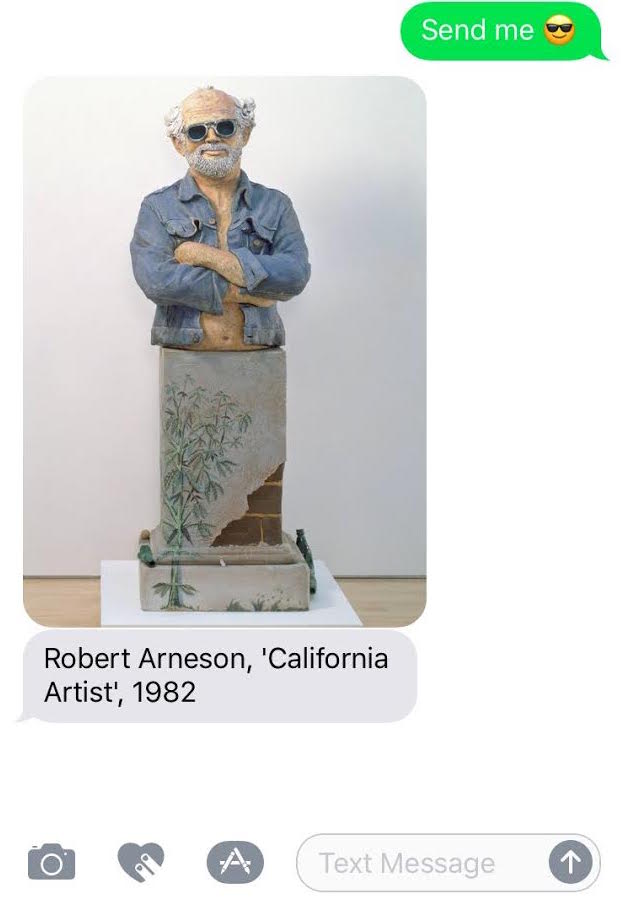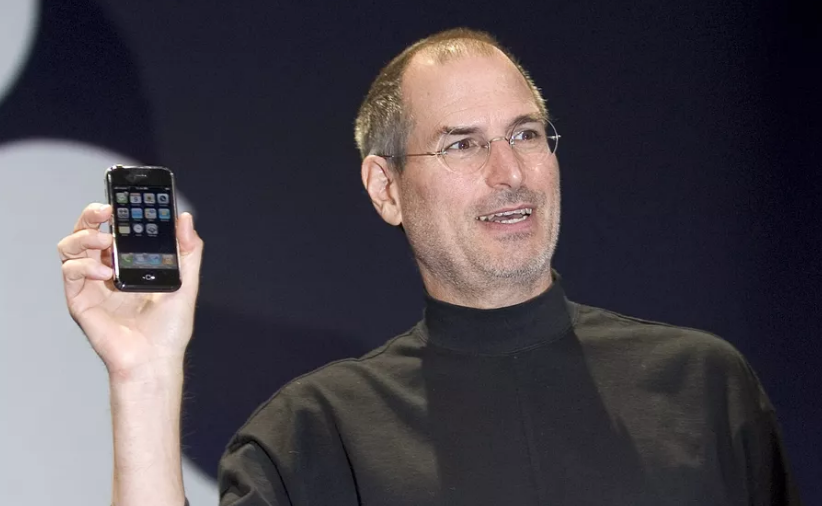
A Museum’s Text Messaging Program Goes Viral – Newsletter 49
In Newsletter #49: Saving money with tomorrow’s technology | Celebrating the 10-year anniversary of the iPhone | An art museum’s text messaging program goes viral.
It’s been a few weeks since HITEC, and what a conference it was. Not only were the ALICE fidget spinners a huge success (they’ve starred in two recaps of the conference: 1 & 2) but thank you to so many of you who came to meet with us and see the recent launches of our new Guest Messaging and Logbook modules.
In the spirit of texting and getting joy from sending emojis to companies (see #3 below), we are going to have some fun today too… through 4pm today text us any emoji that sums up your mood today to 646-386-2326 (my ALICE demo hotel) and we’ll send you back what we believe is the most appropriate response.
The other two pieces we cover in this week’s newsletter are very different from each other. First up is a great piece on rethinking the technology dilemma IT managers are facing today, in which they have so many demands for tech, but not enough money to satisfy them. The second is a look back at a milestone…the 10 year anniversary of the launch of the iPhone and how revolutionary that has been. I really encourage you to read the long versions of these (click through to our website). Both are very interesting.
Yesterday, three companies – Cendyn, StayNTouch and ALICE – partnered on a webinar about breaking the technology silo and how hotels can benefit from today’s technology advances. A recording of it can be watched online if you missed it. Follows on nicely from #1 below.
Best,
– Alex Shashou
HIGHLIGHTS FROM THE WEEK’S NEWS…
Tomorrow’s technology is already saving money.
CIO Review | Limitless Service with Limited Resources
Why it matters:
“Technology takes the human error element out of the equation and proactively approaches the issues before they become a problem,” says Tim Thilleman, Director of IT at Inn at Perry Cabin by Belmond.
As Thilleman describes it, hotels are “yearning for technology to help them provide the personal touch.” We too believe hotels should be looking for technology to help humanize the hotel. In support of this, we often turn to the quote from famous restaurateur Danny Meyer, in which he explains the difference between good customer service and good hospitality. Hospitality is the “feeling” that arises from the service being performed. That “feeling” is delivered by your staff, but we believe technology can be of help.
Yet, we as an industry are at a crossroads between wanting great technology and being able to afford it (or really choosing to prioritize the budget for it). As Thilleman writes, we want “limitless technology with limited resources” for it. So, given that conundrum, “how do hotels meet the demands from the consumer for insatiable technological advancements?”
Well, for starters, we must recognize the existing technology stack is siloed, complex, and overly expensive to implement and manage. How many of you have implemented or been trained on 4+ systems when starting out at a new hotel? This complexity is not only costly to setup and run, but it also leads to your staff being unable to perform their jobs as effectively as they would like.
So, while Tim is right that “the ROI is built into the fact that technology increases the service level to a point where organizations don’t lose money in service recovery”, there are also many unobserved “costs” that need to be considered to prevent having a suboptimal setup for your staff.
Fortunately, there are many affordable technology partners out there. As Tim remarks…“While we are stuck with yesterday’s platform, tomorrow’s technology is already here.”
Ten years ago, iPhone sparked a revolution
Recode |How Apple’s iPhone changed the world: 10 years in 10 charts
Why it matters:
HITEC this year wasn’t only important for our industry because it brought us all together in celebration of hospitality technology innovation, but because it also marked the 10 year anniversary of the iPhone. To be sure, the iPhone, released to the world on June 29th, 2007, wasn’t the first smartphone, but, as Recode’s Rani Molla describes, it leapfrogged the competition and launched the mobile revolution.
The iPhone’s impact on hospitality technology cannot be overstated.
For one, it “put the Internet in everyone’s pocket,” changing how people work and our expectations of services. While on-demand work was birthed with the first internet boom of the late 1990s, smartphones with GPS chips, and the on-demand marketplaces facilitated by those smartphones created the on-demand movement, allowing workers to be truly mobile and decentralized.
The iPhone also “changed the way software was created and distributed,” changing the paradigm from software installed on your desktop hardrive to software accessed through mobile applications. This again meant, for the first time, mobile workers could truly be mobile (something particularly important in hospitality). It allowed businesses, even entire industries, to decentralize a workforce (think TaskRabbits, Uber drivers, Airbnb hosts…). This shift in distribution meant technologies for hotels could finally be built to support the hotel the way it was intended to operate and not in a way that tied hotel staff to desks or had them running back and forth across the hotel.
So too, the iPhone changed everything for the way consumers access services (instantaneously), conditioning us to be ever more demanding. The on-demand economy, made possible by the factors above, and epitomized by on-demand services like Seamless and Uber, has abetted and perpetuated this. Guests now expect to order room service from their phone and have visibility to the status of their requests. This instantaneous access to services, and expectation of instantaneous access to services, has impacted hotel operations more generally, as well as impacted specific roles within the hotel more directly, like that of the hotel concierge. Before a map of the world was available at our fingertips (in the form of Google Maps), guests would have to stop by the concierge desk every time they left a hotel. Now, with the rise of services like Google Maps, as well as others, like Yelp and OpenTable, the hotel concierge is tasked to evolve and find ways to leverage this disruptive technology to his or her advantage.
At the same time, it’s worth considering what hasn’t changed in hotels in the past ten years, and whether or not the potential of the mobile revolution been fulfilled. As we noted in our report on how platform technology can benefit hotels, currently 25% of hotels still run on pen and paper, and 16% claim to have no operations systems at all. And apps, which have completely transformed some industries, have had a hard time breaking into ours, despite a fair amount of hype. Indeed, it’s only recently apps have started to gain traction. This past week, J.D. Power and Associates released its annual North America Hotel Guest Satisfaction Index Study, and found guests who use a hotel’s mobile app are more satisfied and have more satisfied and have greater loyalty to that brand. It’s been slow going though. According to the study, only 19% of all guests have downloaded an app.
So, what do the next 10 years of the iPhone hold? Parallel improvements in other technologies – like cloud, WiFi, platforms and voice recognition technology, to name a few – mean the impact of the iPhone in hospitality will only become greater in its second decade.
Trading poop emojis for Picassos
NYTimes |Text for Happiness. Or Sadness. Get Art Back.
Why it matters:
SFMOMA has blended text messaging with art for a surprise viral hit. Over the past few weeks, the museum has invited people to text the number 57521 with the phrase “send me” followed by a word or an emoji. The museum texts back with a related image from its collection.

The project – an attempt to open up the vast museum collection to the public with almost no barrier to entry – is proving far more popular than the museum ever imagined (over 2 million text messages have been delivered in just the past week) and it’s revealing surprising things, like how and when users want to interact with art, and “how much they crave a personal connection with cultural authority.”
“We want it to feel like you’re communicating with a friend,” says Keir Winesmith, head of web and digital platforms for SFMOMA. To do that, the museum tapped into a familiar mode of communication (text messaging), which doesn’t require apps or downloads, and a colloquial approach to art, rather than the specialized terms employed by archivists and art professionals. And just like a friendship, this project is envisioned as a long-term way to engage with visitors and art enthusiasts, and not just as a fleeting publicity stunt.
We think there’s lots of interesting things here for hotels. Indeed, many hotels have already discovered the benefits of text messaging guests (not to mention emojis, as our Swedish friends at Hobo asked us to implement in ALICE Guest Messaging), but until now, text messaging has facilitated communication between hotels and their current guests, and mostly just for things like early check-in and requests for the WiFi password. What if hotels adopted a similar program to open up the expertise of their concierge to their guest base and locals alike, thereby extending the reach, marketing, and cultural influence of the hotel? We’ve talked before about how Accor, with its Accor Local program, is trying to leverage its hotels as service-hubs for their respective neighborhoods, turning a potential liability (a large amount of capital tied up in physical assets and labor) into a strength (community hub). It’s easy to see how texting the local hotel’s concierge for recommendations (via an ice cream emoji perhaps) could fit naturally into this evolving business model.
- Hotels Train Workers in the Personal Touch New York Times
- Why pop-up hotels are in fashion JLL Real Views
- HTNG Introduces API Registry to Connect Businesses and Technical Partners HTNG
- Airbnb Is Testing a Luxury Service That Will Include Inspections for Quality Control Skift
{{cta(‘3a1b7b2f-4be7-4c26-9bbd-03a0b82288b8′,’justifycenter’)}}










